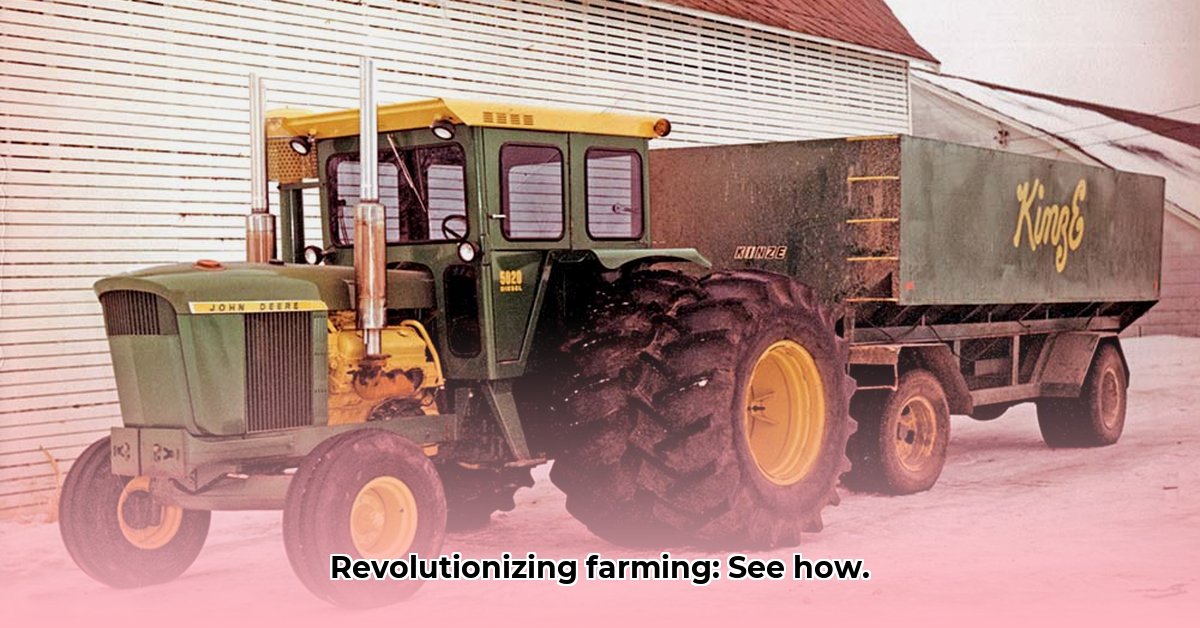
Kinze's Legacy: From the Big Blue to Sustainable Solutions
Kinze tractors represent more than just agricultural machinery; they embody a legacy of innovation deeply intertwined with the evolution of large-scale farming. The story begins with the legendary Big Blue, a groundbreaking machine that redefined agricultural power and efficiency. This behemoth wasn't merely a tractor; it symbolized a paradigm shift, setting a new benchmark for performance in the industry. Its enduring impact continues to influence Kinze's design philosophy, shaping its modern innovations. But how does this historical context translate to today's sustainable agriculture? It's a compelling narrative of technological advancement and environmental responsibility.
The Offset-Pivot Hydraulic Door: A Case Study in Efficiency
One compelling example of Kinze's enduring commitment to innovation is the offset-pivot hydraulic door, a seemingly simple component with a profound impact on agricultural operations. Designed for large-scale grain storage facilities, this adjustable door, capable of spanning widths from 40 to an impressive 120 feet, dramatically enhances operational efficiency. This adjustable design significantly reduces labor costs and minimizes energy waste—a critical factor in today's focus on sustainable farming. How does this translate to practical benefits? Simply put: less time spent = less energy used = smaller carbon footprint. It's a seemingly small innovation with far-reaching consequences, underscoring Kinze's dedication to sustainability.
Key Takeaways:
- Kinze's history, starting with the Big Blue, demonstrates a long-term commitment to agricultural innovation.
- The offset-pivot hydraulic door exemplifies how seemingly small technological advancements can bring about significant improvements in efficiency and sustainability.
- Kinze's innovations are influencing a broader trend in sustainable agriculture practices.
Measuring the Environmental Impact of Large-Scale Agricultural Equipment
Kinze's legacy is intrinsically linked to the environmental footprint of large-scale farming. But how do we accurately measure this impact? It's a complex calculation demanding a multifaceted approach, considering the entire lifecycle of the equipment.
Deconstructing the Environmental Footprint
The environmental impact of large-scale agricultural machinery extends far beyond fuel consumption. Key considerations include:
- Manufacturing: The production process itself consumes significant energy and resources, generating emissions and waste.
- Operation: Fuel type and efficiency of operation are critical factors, with precision agriculture techniques playing a significant role in minimizing resource usage.
- Maintenance and Disposal: Regular maintenance and responsible disposal or recycling practices contribute to the overall environmental impact.
Quantifying the Impact: A Multi-Metric Approach
Precisely measuring environmental impact requires a comprehensive assessment, incorporating multiple metrics:
- Greenhouse Gas Emissions (GHGs): Measured in tons of CO2e per hectare or unit of production, this accounts for emissions from fuel combustion, fertilizer production, and other sources. Life-cycle assessments (LCAs) are crucial for accurate quantification.
- Resource Consumption: Tracking fuel, water, fertilizer, and pesticide usage provides a detailed picture of resource efficiency. Precision agriculture technologies greatly aid in this data collection.
- Land Use Change: Monitoring land cover changes via satellite imagery and GIS helps assess the impact on habitats.
- Soil Health: Evaluating soil carbon content, erosion rates, and nutrient levels gauges the long-term effects of farming practices.
- Water Quality: Monitoring water bodies near agricultural fields helps assess potential pollution from runoff.
- Biodiversity: While challenging to quantify directly, changes in species composition indicate the ecological impact.
By combining these metrics, a complete and informative environmental impact assessment can be produced. Kinze's ongoing commitment to innovation plays a significant role in minimizing these impacts.
Kinze's Role in Shaping a Sustainable Future
Kinze's contributions extend beyond individual products; their dedication to efficient machinery inspires other companies to innovate, demonstrating how technological advancements can drive sustainability in agriculture. The company's focus on precision planting systems, fuel-efficient designs, and exploration of alternative fuels underscores its commitment to minimizing the environmental footprint of farming. While completely eliminating impact is unrealistic, Kinze's dedication to efficiency and technological advancement is pivotal in creating a more sustainable agricultural sector. The adoption of autonomous capabilities further enhances efficiency and resource utilization, signifying a promising path forward for the industry.